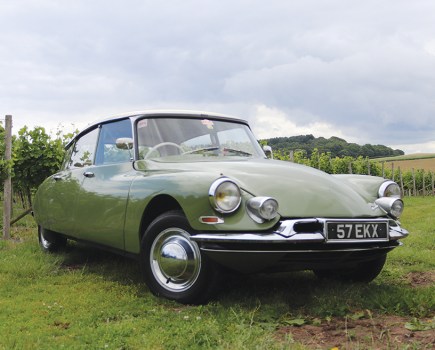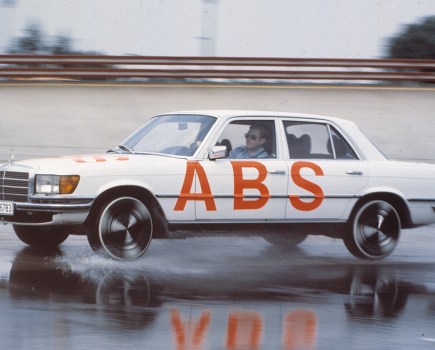Many of today’s younger drivers might find it surprising that the compulsory wearing of seat belts is a relatively recent requirement here in the UK. It’s true that there had been various earlier efforts to bring in a seat belt law, dating back to 1973, but it wasn’t until ten years later – on January 31, 1983 – that motorists in Britain were finally required to ‘belt up’ by law.
With the benefit of hindsight, it seems incredible that arguments over the loss of personal freedom won the debate for a whole decade before the government finally managed to introduce seat belt compulsion – and even then it was only for an initial three-year period. By 1986, however, both Houses of Parliament voted overwhelmingly for the law to be made permanent, and within a further five years it also became a legal requirement for all rear seat passengers to wear seat belts.
Once the initial 1983 law had been passed, official statistics showed a 25 per cent decrease in driver fatalities and a 29 per cent reduction in fatal injuries among front seat passengers, reinforcing the case for seat belt usage. And yet, according to government figures recently revealed by the Institute of Advanced Motorists (IAM), of the 232 car occupants killed in accidents in 2013, a total of 45 were found to be not wearing a seat belt – or almost one-fifth of those killed.
Such figures come as something of a shock after more than three decades of seat belt compulsion, particularly as the effectiveness of seat belts as a life-saving device is without question. According to the IAM, drivers’ seat belts are 50 per cent effective at preventing fatal injuries and 45 per cent effective at preventing serious injuries. Even if some drivers refuse to accept such well-proven statistics, they run the risk of on-the-spot fines of £100 and three penalty points if they’re pulled over by the police.
Kevin Delaney, the IAM’s head of road safety, believes that complacency is the biggest challenge when it comes to seat belt usage: “Quite simply people feel it will never happen to them. They think if they are driving locally and at a low speed, they will be okay. Statistics show that many accidents not only take place at low speeds but also within a few miles of home – so people are mistaken if they think that makes them safer.”
SEAT BELTS & CLASSICS
Things are a little hazier, of course, when it comes to the issue of seat belts in classic cars, as the law states that pre-1965 vehicles aren’t legally required to have seat belts fitted. But how many of us are completely up-to-date with our knowledge of seat belt law for older vehicles? And is there anything we can do to improve the safety of ourselves and our passengers?
We’ve come a long way since the early ’Seventies, when the now disgraced Jimmy Saville became the face of the government’s ‘Clunk Click Every Trip’ safety campaign. To a certain extent it worked, with seat belt usage rates increasing from 30 per cent to 40 per cent – a fairly impressive statistic at a time when many motorists were still sceptical of the safety argument. Inevitably, however, the only way to achieve higher figures was through compulsion, and it’s estimated that around 95 per cent of motorists now comply with Britain’s seat belt laws. For classic car owners, however, the rules are less straightforward.
Thanks to the fact that it only became compulsory for car manufacturers to fit front seat belt anchorage points from late 1964, owners of pre-1965 classics still have no legal obligation to fit seat belts. The official line from Gov.uk is as follows: “Cars and light vans constructed after the end of 1964 but prior to 31 March 1987 must be fitted with seat belts for the driver’s seat and outer passenger seat (if fitted). No belt is required for a central front passenger seat.”
The rules are different, however, for vehicles built later: “Cars and light vans constructed after 1 April 1987 must be fitted with belts for each seat,” explains Gov.uk – and that includes rear seats. The latter point is an important one, as it wasn’t until 1987 that all new cars were required to have rear seat belts fitted as standard.
But there are important issues to bear in mind for owners of older cars. Did you know, for example, that it’s illegal for any child under the age of three to be a passenger in a vehicle without seat belts? This is what Gov.uk has to say on the subject: “If your vehicle doesn’t have seat belts, for example it’s a classic car, you aren’t allowed to carry any children under 3 years old in it. Children over 3 are only allowed to sit in the back seats. These rules only apply if your vehicle was originally made without seat belts.”
We hope, of course, that no parent or guardian would take any risks – legal or otherwise – when transporting children. And the good news is that there is help out there for any classic car owners looking to protect passengers of all ages, with a range of retro-fit seat belts and harnesses available from companies like Quickfit Safety Belt Service (www.quickfitsbs.com), which also provides technical advice for any owners looking for the full rundown on fitting seat belts to their particular make and model.
So one final question remains: Would you divert away from the original spec of your pre-1965 classic by installing seat belts for extra safety, or are you a classic owner who insists on originality all round?




